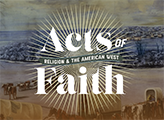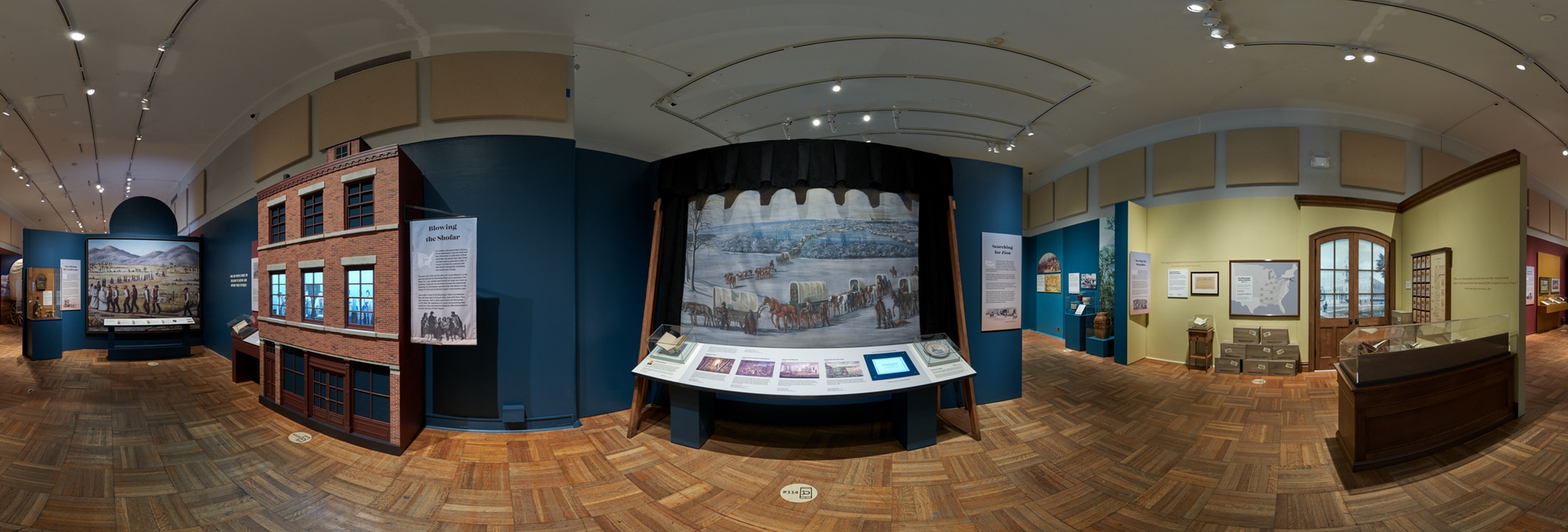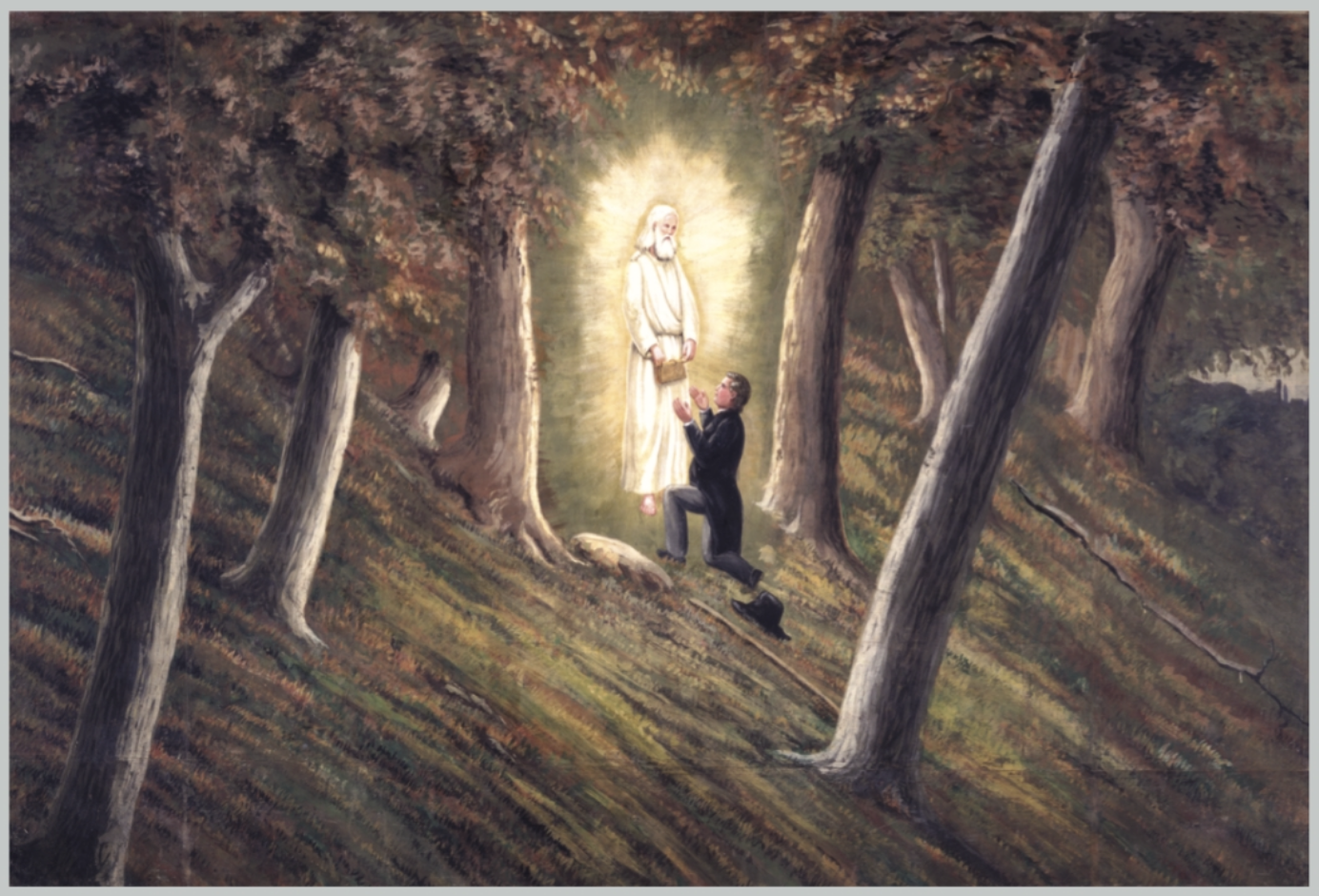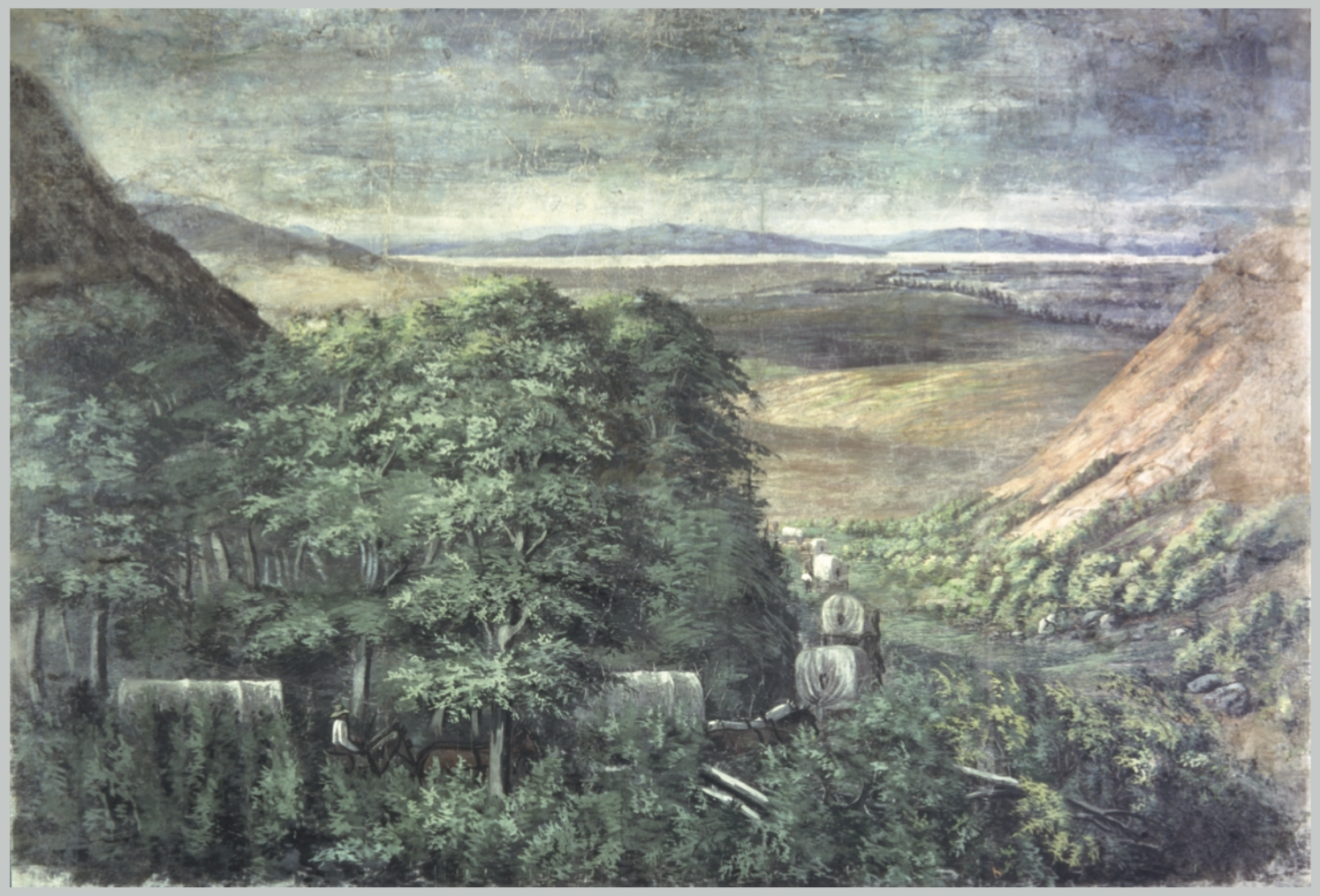




These scenes are part of a moving panorama begun in the 1870s by C.C.A. Christensen, a Mormon convert from Denmark. Christensen traveled with the panorama to audiences throughout the Mountain West. While his 23 massive paintings were rolled out one by one, he recounted the story of an exodus aided by divine intervention.

C.C.A. Christensen (1831-1912)
Crossing the Mississippi on the Ice, ca. 1878
Facsimile
Tempera on muslin, 77 7/8 x 114 inches
Brigham Young University Museum of Art, gift of the grandchildren of C.C.A. Christensen, 1970
The Hill Cumorah
September 1827
Christensen portrayed Joseph
Smith’s account of visits from the angel Moroni, who led him to golden plates
inscribed in sacred writing. Using seer stones found with the plates, Smith
translated and published the Book of Mormon in New York in 1830. It identified
American Indians as descendants of an early migration from Jerusalem and
prophesied that they would play an important role in the Second Coming of
Christ to the Americas.

C.C.A. Christensen (1831–1912)
The Hill
Cumorah,
ca. 1878
Tempera on muslin, 80 ½ x 116 in.
Brigham Young University Museum of Art,
Gift of the grandchildren of C.C.A. Christensen,
1970
Saints Driven from Jackson County, Missouri
July 1833
In 1831, Joseph Smith identified
Independence, Missouri, in Jackson County, as the New Jerusalem and “center
place of Zion.” When over 1,000 Saints flocked there, other white settlers
responded violently, fearing the Mormons' economic and political strength and
their apparent opposition to slavery. Although the Saints eventually found land
in a different part of the state, trouble followed. In 1838, Governor Lilburn
Boggs ordered them to leave Missouri or risk death.

C.C.A. Christensen (1831–1912)
Saints Driven
from Jackson County, Missouri, ca. 1878
Tempera on muslin, 77 ¼ x 113 in.
Brigham Young University Museum of Art,
Gift of the grandchildren of C.C.A. Christensen,
1970
Interior of Carthage Jail
June 1844
In Nauvoo, Illinois, Joseph
Smith’s complicity in the destruction of an opposition Mormon newspaper led to
his imprisonment in the Carthage county jail. Illinois’s governor promised him
protection, but a masked mob stormed the jail, killing him and his brother
Hyrum. Their deaths established their martyrdom and signaled to the Saints that
they must eventually leave the city.

C.C.A. Christensen (1831–1912)
Interior of
Carthage Jail,
ca. 1878
Tempera on muslin, 78 x 120
in.
Brigham Young University Museum of Art,
Gift
of the grandchildren of C.C.A. Christensen, 1970
Entering the Salt Lake Valley
July 1847
Christensen’s final painting
shows the first company of Saints entering the Salt Lake Valley. This small
group set about plowing and planting while awaiting the rest of the faithful.
In this new place of gathering, the Saints hoped to live their religion in a
way that would bring about a new millennium of Christ's reign on earth.

C.C.A. Christensen (1831–1912)
Entering the
Great Salt Lake Valley, ca. 1878
Tempera on muslin, 77 ¼ x 113
in.
Brigham Young University Museum of Art,
Gift of the grandchildren of C.C.A. Christensen,
1970